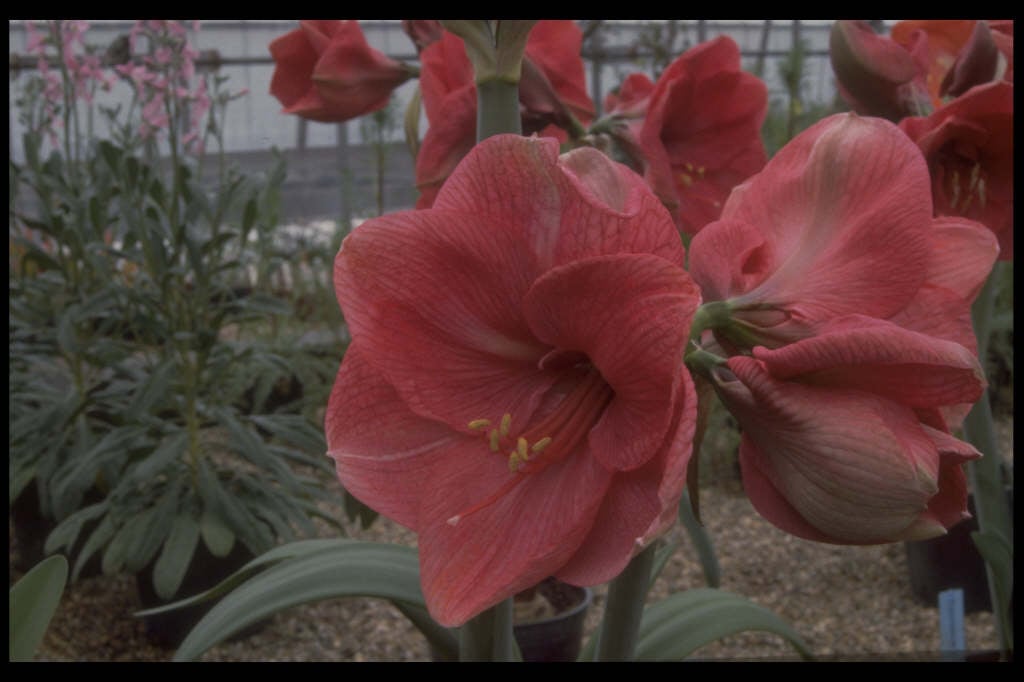Size
Ultimate height
0.1–0.5 metresTime to ultimate height
1–2 yearsUltimate spread
0.1–0.5 metresGrowing conditions
Moisture
Moist but well–drained, Well–drainedpH
Acid, Alkaline, NeutralColour & scent
| Stem | Flower | Foliage | Fruit | |
| Spring | Green | |||
|---|---|---|---|---|
| Summer | ||||
| Autumn | ||||
| Winter | Pink | Green |
Position
- Full sun
- Partial shade
Aspect
South–facing or East–facing or West–facing
Exposure
Sheltered Hardiness
H2Botanical details
- Family
- Amaryllidaceae
- Native to GB / Ireland
- No
- Foliage
- Deciduous
- Habit
- Tufted
- Potentially harmful
- Harmful if eaten. Wear gloves and other protective equipment when handling. Pets (dogs, cats): Harmful if eaten. For further information and contact numbers regarding pets, see the HTA guide to potentially harmful plants
- Genus
Hippeastrum are deciduous bulbous perennials with slightly fleshy, strap-shaped leaves and stout, leafless stems bearing umbels of large, funnel-shaped flowers usually in winter or spring
- Name status
Accepted
How to grow
Cultivation
Pot newly purchased bulbs from October to January, large bulbs in a 15cm container, smaller ones in a 10cm container, planting so that two-thirds of the bulb remains above the surface and watering in well. The appearance of leaves will signify that root activity has started and regular watering can begin. A good supply of water is required as soon as growth becomes vigorous. A warm buoyant atmosphere with a temperature ideally in the region of 15-18°C and a sunny position are desirable for good growth. Exposure to the sun should be avoided only in the hottest part of summer. See hippeastrum cultivation and bulbs for Christmas flowering for further information
Propagation
Propagate by seed sown as fresh as possible in a temperature of 16-18°C. Seeds can be started in peat-free seed compost and seedlings potted on using peat-free John Innes No 2 with the addition of extra sharp sand or grit. Grow in individual small pots, potting on periodically during the spring-summer season of vigorous growth into slightly larger pots as the young plants develop or each time the pot becomes well filled with roots. Keep plants growing actively, in moderate warmth, allowing no periods of dormancy. Cultivars will not come true from seed; an alternative method of propagation is to remove offsets in autumn
Suggested planting locations and garden types
- Patio and container plants
Pruning
No pruning required
Pests
May be susceptible to bulb scale mite, large narcissus bulb fly and slugs and snails throughout the summer months
Diseases
Generally disease-free
Get involved
The Royal Horticultural Society is the UK’s leading gardening charity. We aim to enrich everyone’s life through plants, and make the UK a greener and more beautiful place.
